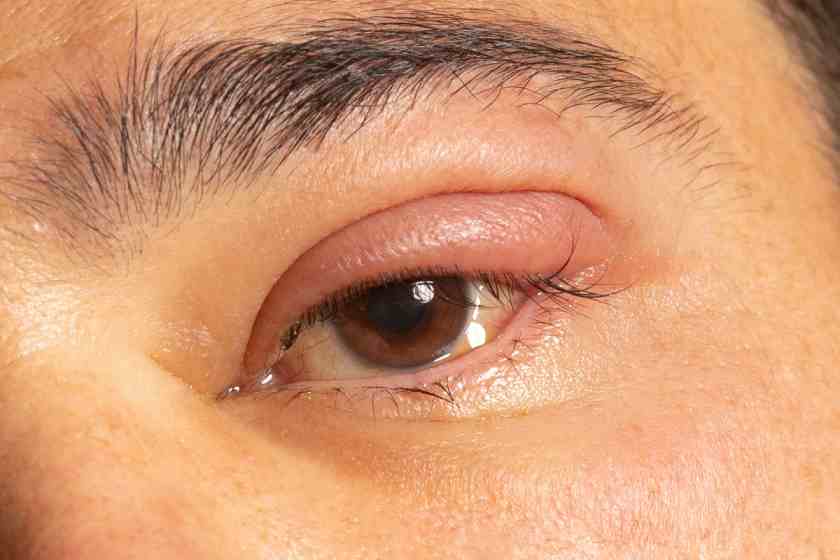Think about waking up on a random morning and finding a tiny red bump sitting on your eyelids. You touch it and it hurts too much. Plus, it appears unsightly. Even worse, you need to show yourself to people today. Frustrating.
This little intruder is called a ‘stye’, and it can turn any day upside down. Fortunately, it is possible to prevent and treat symptoms effectively.
What is a Stye?
A stye is a small, painful lump that typically forms on the edge of your eyelid. It is medically known as a ‘hordeolum.’ You may ask, “What causes it?” Well, bacterial infection, often involves the Staphylococcus bacteria.
These little painful things can appear as:
- Red
- Swollen bumps
- Filled with pus
Mind you, they can cause significant discomfort. Usually, they burst and then heal. However, in some cases, you need to treat the infection. Moreover, you will usually get a stye in one eye at a time and may even get it repeatedly.
Types of Styes
There are two types of styes—external and internal.
- External stye develops on the outer edge of your lid, near your lashes.
- In contrast, internal stye develops inside of your eyelids.
Common Reasons You Have Developed Styes
Styes develop when oil glands around your eyes become blocked and infected. Mind you, there is more than one reason for this. Here’s a glimpse:
- Bacteria like staphylococcus are often the root cause of styes. Most of the time, there’s no problem. However, under the right conditions, these tiny, invisible-to-the-eyes bacteria grow. Thus, leaving you with an infection.
- When was the last time you checked your makeup’s expiry? If the answer is long ago, you need to check it right away. Why? Because using expired makeup or not removing your makeup properly can clog your oil glands and give you styes.
- Bacterial transfer. It is a singular reason with multiple causes. One of the causes why you may have developed styes is touching your eyes with dirty hands.
- Another reason could be dirty contact lenses. Contact lenses sit closest to your eye, and when you don’t clean them well, they can cause you to contract an infection.
Also Read: 5 Common Eye Conditions: Causes, Symptoms, and Treatments
Preventing Styes?
Precaution is better than cure. Preventing styes involves adhering to good eye and hygiene practices. Here are a few suggestions we normally provide at Shree Ramkrishna Netralaya:
- Make it a point to wash your hands with gentle soap before touching your eyes. This one practice can greatly reduce the amount of bacteria that reach your eyes.
- Like your hands, your eyelids also require gentle cleansing. You can use a baby shampoo formula to wash your eyelids regularly to remove all debris, makeup, and oil.
- Regularly check your makeup products for expiry, especially your kajal, mascara, concealer, eye shadow, and eye primer. They are usually the ones that come closest to your eye. Checking other products is also suggested.
- Regularly wash and replace your makeup tools—brushes, eyelash curlers, sponges—every three to six months. Finally, remove your makeup before going to sleep.
- Religiously change your lens solution every day, clean them with a contact disinfectant, and replace your case every 3 months. Keep your lenses away from water, be it of any kind, to avoid bacterial transfer.
Treating Styes
If, for any reason, you develop styes, you can try the following:
- Apply a warm, damp cloth to the affected area for 10-15 minutes, 3-4 times a day. This helps to dissolve the pus and promote drainage, reducing pain and swelling.
- Do not try to pop the stye. It can spread the infection and cause more harm. Allow the stye to drain naturally.
- If the stye is severe or persistent, visit your doctor immediately. They may prescribe antibiotic ointments or drops to eliminate the infection and speed up healing.
Also Read: Dry Eye Syndrome: Causes, Symptoms, and Treatment Options
Wrapping Up
Styes can be a nuisance, but with proper prevention and treatment, you can minimize their impact. By maintaining good hygiene, taking care of your eyes, and following these simple steps, you’ll be well-equipped to handle any stye that comes your way.
Remember, your eyes are precious—take care of them!
For any eye-related issues contact Shree Ramkrishna Netralaya, one of the best eye hospitals in Navi Mumbai.

